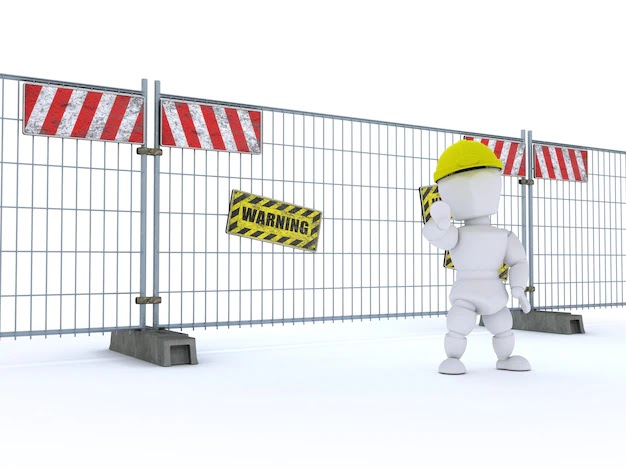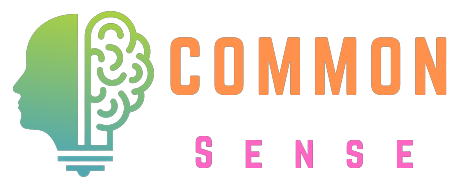
Overcoming Decision Fatigue
I. What Is Decision Fatigue?
Decision fatigue occurs when the mental energy required to make decisions depletes over time. This phenomenon reduces our ability to weigh options effectively, leading to poor choices, procrastination, or avoidance. For instance, after a long day of decision-making, even simple tasks like choosing dinner can feel overwhelming.
Common signs of decision fatigue include:
1. Difficulty focusing
2. Impulsivity or snap decisions
3. Avoidance of decision-making
4. Increased stress or frustration
Research shows that decision-making consumes cognitive resources. Each decision, regardless of its size, requires mental effort. As these resources are finite, excessive decision-making drains them, making subsequent choices harder.
II. The Science Behind Decision Fatigue
Research shows that decision-making consumes cognitive resources. Each decision, regardless of its size, requires mental effort. As these resources are finite, excessive decision-making drains them, making subsequent choices harder.
Example: In a 2011 study, judges were more likely to grant parole in the morning than later in the day, illustrating how decision fatigue can affect judgment and fairness.
III. Causes of Decision Fatigue
1. Overloading Your Day with Choices: Having too many decisions to make throughout the day can be mentally draining.
2. Lack of Prioritization: When every decision feels equally important, it becomes harder to manage mental energy.
3. Perfectionism: Constantly striving for the "perfect" choice can increase the mental load.
4. Poor Time Management: Leaving decisions to the last minute forces rapid decision-making, exacerbating fatigue.
IV. Impact of Decision Fatigue
1. Poor Decision Quality: Tired minds may resort to shortcuts, impulsivity, or procrastination, leading to suboptimal outcomes.
2. Stress and Anxiety: The pressure of constant decision-making can heighten stress levels, impacting overall well-being.
3. Burnout: Decision fatigue contributes to mental and emotional exhaustion, affecting productivity and relationships.
V. Strategies to Overcome Decision Fatigue
1. Simplify Routine Decisions: Reduce mental strain by automating or simplifying daily decisions.
Example: Create a meal plan, wear a capsule wardrobe, or establish a morning routine. These habits free up cognitive energy for more significant decisions.
2. Prioritize Decisions: Identify the most critical decisions for the day and focus your mental energy on those.
Use Tools: A prioritization framework like the Eisenhower Matrix helps categorize decisions by urgency and importance.
3. Limit Choices: Having too many options can be overwhelming.
Solution: Narrow your choices by setting parameters. For instance, limit your search to three options when shopping online.
4. Make Decisions Early: Cognitive energy is highest in the morning. Plan essential decision-making tasks for this time.
Tip: If possible, avoid making critical decisions late in the day when fatigue sets in.
5. Delegate When Possible: Trust others to make less critical decisions for you. This delegation not only conserves your energy but also empowers team members.
6. Adopt a Decision-Making Framework: Use systematic approaches like pros and cons lists or cost-benefit analyses to streamline decisions.
7. Take Breaks: Regular breaks restore mental energy, making it easier to tackle decisions with clarity.
Example: Incorporate the Pomodoro Technique, working in focused bursts with short breaks in between.
8. Set Deadlines: Decision fatigue often stems from indecision. Setting deadlines encourages timely decisions and prevents overthinking.
9. Practice Self-Care: Physical health directly impacts mental energy.
Prioritize: Quality sleep, Nutritious meals, Regular exercise.
10. Establish Boundaries: Learn to say no to avoid overloading yourself with unnecessary decisions or commitments.
10. Establish Boundaries: Learn to say no to avoid overloading yourself with unnecessary decisions or commitments.
VI. Practical Applications: Combating Decision Fatigue in Daily Life
1. Workplace
a) Scenario: Managing multiple projects can be overwhelming.
b) Solution: Use task management tools like Trello or Asana to organize priorities and assign tasks.
2. Personal Life
a) Scenario: Deciding what to cook every evening.
b) Solution: Plan weekly meals in advance or use meal delivery services.
3. Parenting
a) Scenario: Constantly choosing activities for your kids.
b) Solution: Rotate pre-set activities to minimize daily decisions.
Apps and tools can simplify decision-making processes:
1. Calendars and Planners: Schedule decisions to avoid clustering them.
VII. The Role of Technology in Reducing Decision Fatigue
Apps and tools can simplify decision-making processes:
1. Calendars and Planners: Schedule decisions to avoid clustering them.
2. AI Assistants: Use smart assistants for reminders or to automate recurring tasks.
3. To-Do Lists: Organize tasks by priority and tackle them systematically.
Developing resilience is key to maintaining sharp problem-solving skills:
1. Cultivate Mindfulness: Mindfulness practices like meditation enhance focus and reduce mental clutter.
VIII. Building Resilience Against Decision Fatigue
Developing resilience is key to maintaining sharp problem-solving skills:
1. Cultivate Mindfulness: Mindfulness practices like meditation enhance focus and reduce mental clutter.
2. Reflect and Learn: Analyze past decisions to identify patterns and improve future choices.
3. Stay Flexible: Accept that not all decisions will be perfect and adapt as needed.

Overcoming decision fatigue is a challenge that affects everyone, from professionals to parents. By understanding its causes and implementing strategies to simplify choices, prioritize decisions, and maintain mental clarity, you can overcome decision fatigue and stay sharp. Remember, every decision doesn't need to be perfect—preserving your mental energy for what truly matters will lead to better outcomes in the long run.
Ques 1: What is decision fatigue, and how does it affect daily life?
Ans: Decision fatigue occurs when the mental energy required to make choices is depleted after continuous decision-making. This leads to reduced ability to make effective decisions, procrastination, or poor judgment. It can manifest in both personal and professional settings, making even simple choices feel overwhelming by the end of the day.
Ques 2: How can I recognize the signs of decision fatigue?
Ans: Common signs of decision fatigue include:
a) Difficulty focusing or concentrating
b) Making impulsive or hasty decisions
c) Avoiding decisions altogether
d) Increased feelings of stress, frustration, or exhaustion
Ques 3: What are some practical steps to reduce decision fatigue?
Ans: some practical steps to reduce decision fatigue are:
a) Simplify routine decisions, such as meal planning or outfits.
b) Use prioritization tools like the Eisenhower Matrix to focus on important tasks.
c) Schedule high-stakes decisions in the morning when mental energy is highest.
d) Delegate tasks when possible to reduce your decision-making load.
e) Take regular breaks to recharge your cognitive resources.
Ques 4: Can technology help in combating decision fatigue?
Ans: Yes, technology can simplify decision-making by:
a) Automating repetitive tasks (e.g., scheduling with apps like Google Calendar).
b) Using to-do list tools to organize and prioritize tasks.
c) Leveraging AI assistants for reminders and quick research.
Ques 5: How does self-care impact decision fatigue?
Ans: Physical and mental well-being are crucial in combating decision fatigue. Ensure you get adequate sleep, eat balanced meals, and exercise regularly. These habits improve cognitive function, enhance focus, and help maintain the mental energy needed for effective decision-making.

Conclusion
Overcoming decision fatigue is a challenge that affects everyone, from professionals to parents. By understanding its causes and implementing strategies to simplify choices, prioritize decisions, and maintain mental clarity, you can overcome decision fatigue and stay sharp. Remember, every decision doesn't need to be perfect—preserving your mental energy for what truly matters will lead to better outcomes in the long run.
FAQ
Ques 1: What is decision fatigue, and how does it affect daily life?
Ans: Decision fatigue occurs when the mental energy required to make choices is depleted after continuous decision-making. This leads to reduced ability to make effective decisions, procrastination, or poor judgment. It can manifest in both personal and professional settings, making even simple choices feel overwhelming by the end of the day.
Ques 2: How can I recognize the signs of decision fatigue?
Ans: Common signs of decision fatigue include:
a) Difficulty focusing or concentrating
b) Making impulsive or hasty decisions
c) Avoiding decisions altogether
d) Increased feelings of stress, frustration, or exhaustion
Ques 3: What are some practical steps to reduce decision fatigue?
Ans: some practical steps to reduce decision fatigue are:
a) Simplify routine decisions, such as meal planning or outfits.
b) Use prioritization tools like the Eisenhower Matrix to focus on important tasks.
c) Schedule high-stakes decisions in the morning when mental energy is highest.
d) Delegate tasks when possible to reduce your decision-making load.
e) Take regular breaks to recharge your cognitive resources.
Ques 4: Can technology help in combating decision fatigue?
Ans: Yes, technology can simplify decision-making by:
a) Automating repetitive tasks (e.g., scheduling with apps like Google Calendar).
b) Using to-do list tools to organize and prioritize tasks.
c) Leveraging AI assistants for reminders and quick research.
Ques 5: How does self-care impact decision fatigue?
Ans: Physical and mental well-being are crucial in combating decision fatigue. Ensure you get adequate sleep, eat balanced meals, and exercise regularly. These habits improve cognitive function, enhance focus, and help maintain the mental energy needed for effective decision-making.







Do Leave Your Comment